Check out the Best Tabletop Palms that will look fabulous on a desk or a counter! Pick one that you like the most from the list!
If you are looking for plants to keep on counters and coffee tables for a lush tropical look indoors, then here are the Best Tabletop Palms you must grow!
How to Grow Tabletop Palms?
The key to growing palms on the tabletops lies in the pot and their age. You will have to confine them in a smaller than usual pot to ensure their size stays manageable on desks and tabletops.
The best time to grow these palms is when they are young, as they can get quite big and huge as they mature. The initial 1-3 years is the best time to have them in pots on tabletops.
You may also have to regularly prune them in order to keep their growth and spread in check, depending on the size of the table you have placed them.
Find out the most popular types of palm plants here
Best Tabletop Palms
1. Ponytail Palm
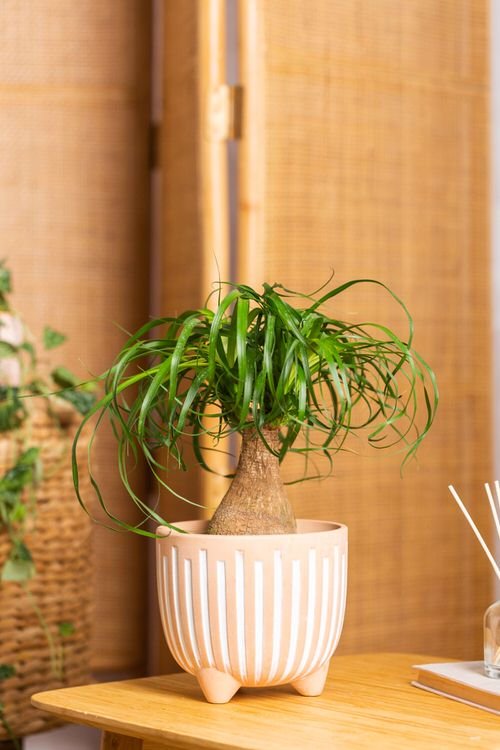
livetrends
Botanical Name: Beaucarnea recurvata
Ponytail palm is a great option for tabletops! It has a short and sturdy trunk that looks beautiful with its arching leaves. It is not a true palm but a succulent, which makes it low maintenance. One more benefit is it’s slow-growing!
Growing Tips: Avoid overwatering. It will be good for the plant to become pot-bound as this condition keep the growth under control for a tabletop specimen.
2. Sago Palm
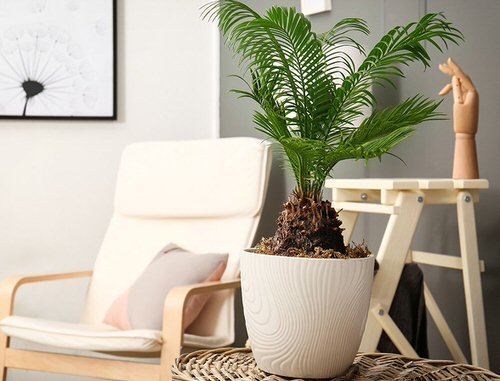
gardenbeast
Botanical Name: Cycas revoluta
This slow-growing plant is also not a true palm and can be toxic too if ingested, especially the seeds. It displays stiff fronds in upright form, emerging from the short trunk that looks like a pineapple.
Growing Tips: Place this tabletop specimen where it can catch the filtered sun for 4-6 hours.
Learn about planting Sago palm seeds here
3. Parlor Palm

Botanical Name: Chamaedorea elegans
This charming palm showcases clumps of light-textured deep green leaves. It grows slowly and takes years to attain full height, making it a great choice for tabletops.
Growing Tips: Keep it in an area with bright indirect light, use peat soil-based mix. Avoid overwatering.
4. Chinese Fan Palm
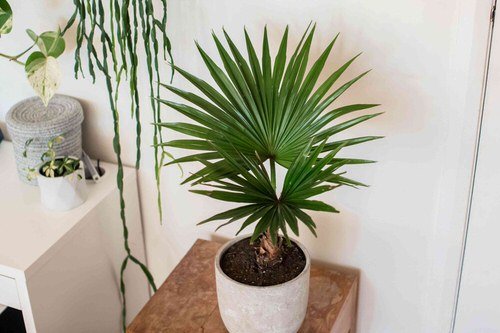
Botanical Name: Livistona chinensis
It is also popular as fountain palm due to its arching fronds that spill like water from the fountain. This slow-growing palm is quite suitable as a houseplant.
Growing Tips: It prefers full to partial sun and moist, loamy well-draining soil.
5. European Fan Palm

plantvine
Botanical Name: Chamaerops humilis
It can be a large centerpiece of your room with a lovely fan-like appearance. The gray-green triangular fine-textured foliage can spread up to 2-4 feet.
Growing Tips: It needs filtered sunlight. Water only when the topsoil becomes dry.
Get all the Mule palm tree care information here
6. Cat Palm
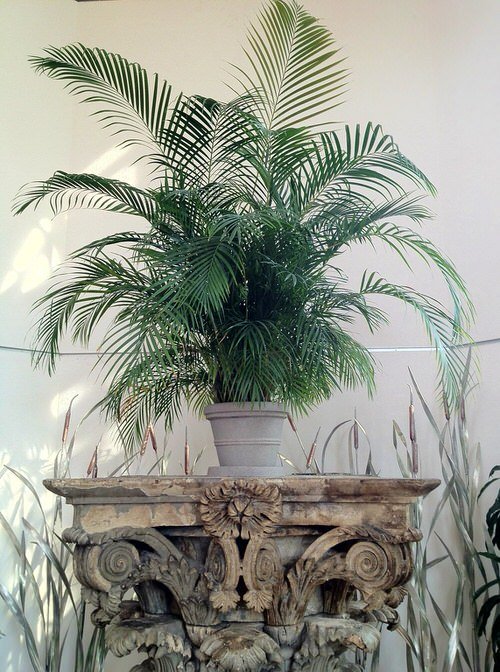
flickr
Growing Tips: Chamaedorea cataractarum
Bring a dramatic touch to your home with its shiny green leaves on stemless clumps. You can place it on the tabletop and restrict the growth by regular pruning.
How to Grow: Place it in an area where it gets bright indirect light. Avoid overwatering but keep the soil moist.
7. Fishtail Palm
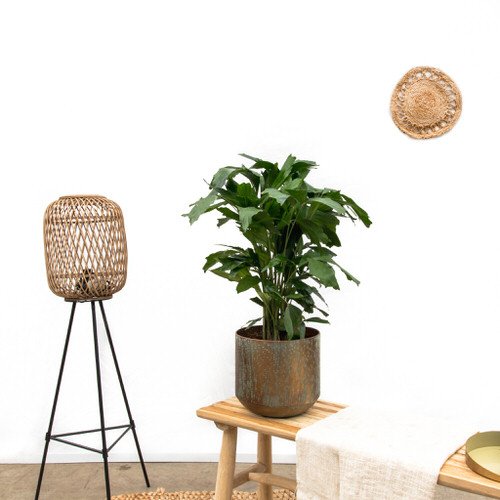
green-bubble
Growing Tips: Caryota
This beautiful palm has ragged edges that look like the tail of a fish hence the name. It looks great as a tabletop plant in the corner of a room.
How to Grow: It requires bright and indirect light. Make sure you elevate the humidity levels and use well-draining soil.
8. Metallic Palm

articulo.mercadolibre
Growing Tips: Chamaedorea metallica
This variety has a more distinct look than other usual palm trees, thanks to its blue-green fronds that have a stunning metallic sheen.
How to Grow: It does well in bright indirect light. Use loamy, humus-rich, and well-draining soil.
9. Bamboo Palm
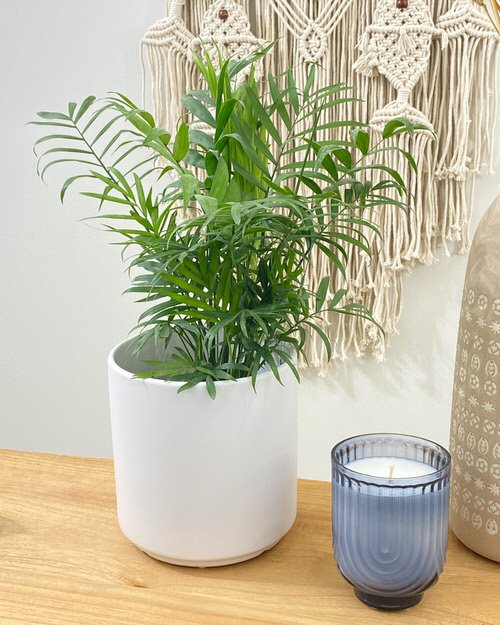
plantvine
Botanical Name: Chamaedorea seifrizii
It grows up to 2-3 feet tall indoors, making it a perfect choice for tabletops. The palm offers dense green bushy leaves and cane-like stems.
Growing Tips: Grow this slow-growing beauty in bright, indirect sunlight.
10. Areca Palm

Botanical Name: Dypsis lutescens
One of the most popular plants for homes, this specimen can be pruned and kept in small pots as a coffee table plant.





